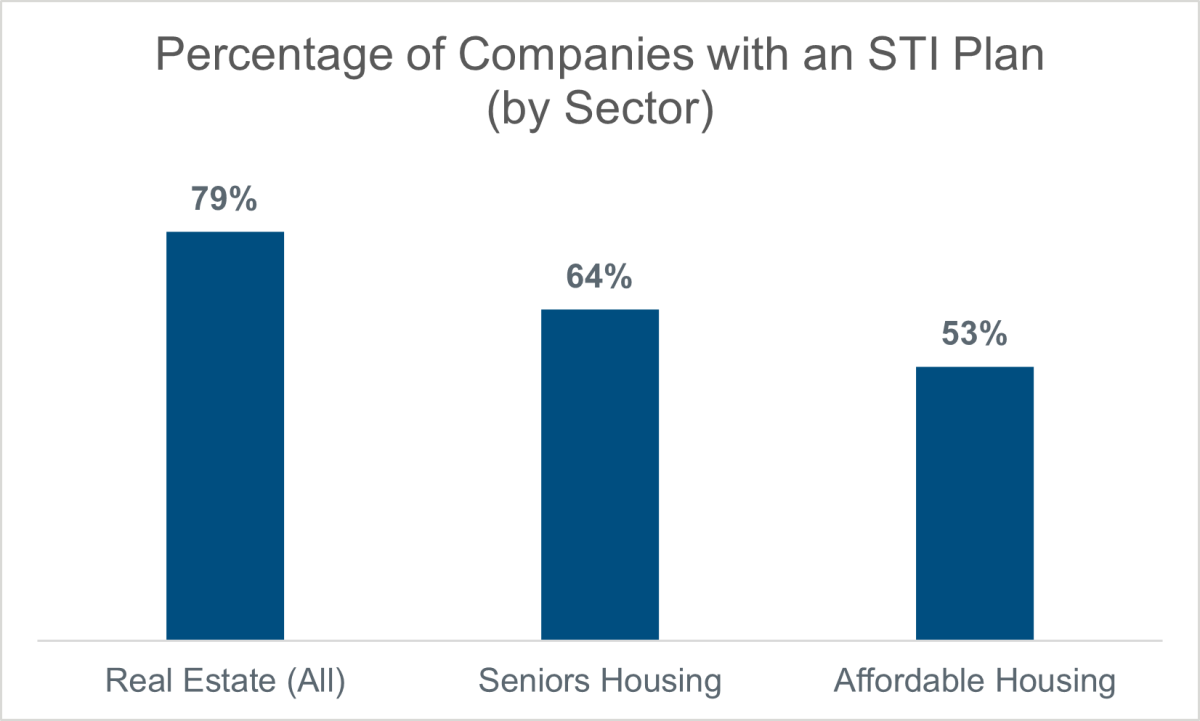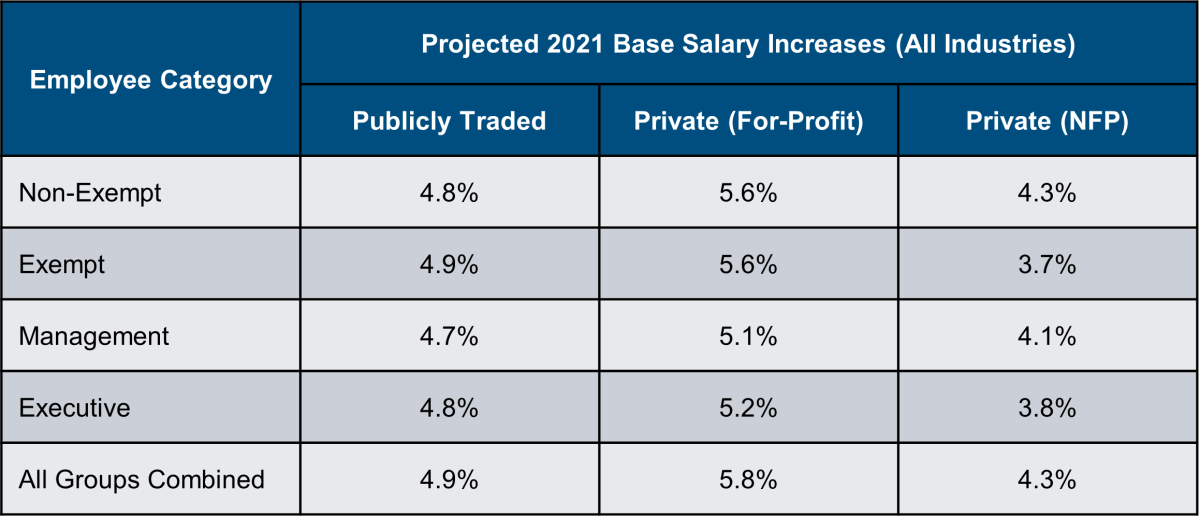
Article | Jun 2022
Navigating the Turnover Tsunami: Hiring, Training, and Maintaining Real Estate Professionals in 2022
Here are four key strategies real estate firms are using to address the Great Resignation and build a stronger, more cohesive, and inclusive culture.
Turnover and retention have become key buzzwords for companies in 2022. No matter the industry or geography served, firms are asking themselves and their advisors the same set of questions: how do we attract, retain, and develop difference-making individuals in today’s extremely volatile and talent-starved marketplace?
In January of this year, the Bureau of Labor Statistics reported that over 4.5 million people left their positions in the previous November alone—an all-time high according to the Bureau. That’s 3.4 percent of the non-farm workforce walking away in one month—a record number of “quits.” The following month, December 2021, another 4.3 million Americans left their jobs. More telling, and of direct relevance to our sector, the number climbs to 6.9 percent among those working in the accommodation and food services sectors, which includes hospitality and real estate-focused companies. This quit rate, however, does not equate one-to-one with workers dropping out of the workforce completely. Statistics also show record hiring in these sectors, suggesting that workers appear increasingly confident to quit their jobs in search of better ones.
The question that needs to be asked is: Does our company represent one of these “better” jobs? You may also ask if there are reasons your firm may be struggling to retain staff, particularly on-site professionals, or struggling to attract new candidates for a growing list of open positions. If that is the case, you may also need to explore, sooner rather than later, how turnover and unfilled openings are affecting your current teams, and what the impact is on employee morale and productivity given these challenges.
While there is no instant solution, there are four key strategies real estate firms are using to address the Great Resignation and not only holding their teams together, but building a stronger, more cohesive, and inclusive culture.
Number 1: Reassessing Compensation Philosophy
Companies are struggling with recruiting and retention challenges. While an increasing number of firms provide short- and long-term incentive awards to their professional and support teams, program design changes may need to be considered to boost their impact as a retention tool.
While it is not suggested that firms pay beyond their ability, companies who do not offer short- or long-term incentives on top of base salary are at an increasing disadvantage.
Today, just under 80 percent of firms currently provide short-term incentive opportunities to their professional teams. Of these firms, roughly 70 percent include all levels of their organizations, including support and on-site staff. In short, annual cash incentives are now part of the expectations of real estate professionals, nationally and increasingly at all levels within an organization.

Some firms continue to buck this bonus trend without problematic results. Typically, these firms represent some combination of elite culture, mission, and/or core values that lead to strong employee engagement. These companies offer other material inducements to create a retention vehicle with real value, and/or pay materially over market in base salary.
But for firms who cannot afford a traditional short-term incentive program or whose current program is not serving as an effective retention tool, what can be done? Firms who do not wish to incorporate annual bonus awards may want to consider making one-time awards that vest over time. Safeguards can be put in place to guard against such a plan becoming a financial burden. Payout can be staggered over a three-year period and provisions can be installed in the plan that allow the timing of the payouts to be deferred should the payout cause material harm to the company. While spot or retention awards can be effective in the short-term, awards with a multi-year tail, may provide companies with the ”golden handcuff” necessary to stem the tide of additional resignations in a manner that is easier to digest for the company’s finances.
With respect to base salaries, the current market necessitates a more nuanced approach to annual increases than the flat three percent annually that the industry has become accustomed to. Over a third of respondents to the most recent Pearl Meyer Real Estate Compensation Survey have indicated that for some positions, they have had to make base salary adjustments of between six and nine percent. This trend is most pronounced among junior- to mid-level staff and in select functions including property management, finance and accounting, and underwriting, among others. Currently these areas are presenting the greatest flight risk and have thus seen the most dramatic adjustments. A continued tightening of the labor market for relevant talent will increase pressure on firms to make significant base salary adjustments if they expect to stay at or near the market median.

Where companies fall as compared to the market varies among employee levels but is often tied to overall firm compensation philosophy. This is usually influenced by both the executive team and board of directors, dependent on company structure. Typically, it is recommended that firms target the median, in aggregate, for total compensation; however, in the current labor market, some additional caveats are being placed on compensation strategies. Notably, firms who aimed to target median total compensation through below average base salaries in exchange for outsized incentives are finding themselves at a disadvantage to firms who take a more balanced approach with higher guaranteed compensation regardless of total pay. This strategy has led to major retention issues for many of its observers.
Often, the primary motive behind employee stay-go decisions is money. Firms who ignore this and lag behind or simply refuse to provide market-competitive base salaries and the opportunity for annual incentive compensation will find themselves increasingly struggling to attract and retain a quality professional and support team.
Finally, this is not a “one and done” exercise. Ensuring that the links between business strategy, talent management, and compensation strategy are aligned should be reevaluated as firms adapt to the changing needs and circumstances of their business and the market.
Number 2: Recalibrating for Remote Work
In our post-COVID environment remote work is here to stay. Companies concerned with retention need to accept this and adapt their human capital strategies to accommodate this new, permanent reality.
Pearl Meyer data show that over one-third of the total US-based work force will work remote post-pandemic, yet many firms are struggling to accommodate this new expectation. As employees continue to grapple with personal health issues, elderly parents, and childcare concerns, working from home and maintaining flexible schedules has offered some much needed relief. At the same time, companies are also finding that production does not generally decline, and in many cases is higher than in an all-office environment. Often, the enticement of rival firms that offer superior compensation and/or greater flexibility with work-from-home policies can be too hard to resist. Firms need to continue to define and refine the scope and parameters of their remote/flexible work policies. Forward-thinking firms are developing strategies and emphasizing engagement at all levels to combat compromises to culture and training efforts that arise without a full, vibrant, and centrally located workforce.
Within this balance, it becomes more critical than ever to ensure that employees have a unified vision, corporate mindset, and are clear on the objectives that will continue to unite them despite a change in geography. However, with retention continuing to be among companies’ top priorities, it is important that changes to a flexible work policy not be perceived as a takeaway. Successful firms are balancing this myriad of concerns to ensure new policies support a unified culture as opposed to presenting a roadblock to growth.
Number 3: Fostering Career Transparency
Emboldened by an employee-friendly labor market, professionals are becoming increasingly demanding with respect to what they wish to get out of their relationship with their firm. For many in the critical junior to middle level, retention will remain a critical issue unless firms can demonstrate a personal level of connection and commitment to their talent base through career development opportunities. In short, difference-making professionals are looking for careers, not jobs, and there is a greater need for companies to proactively manage the direction of their more junior-level professionals.
Firms that have proven to be more resilient against turnover display a regular, transparent cadence with their professional team, demonstrating through mentoring, investment in continuing education opportunities, and/or industry conference participation that they have the long-term growth of their professionals in mind. Forward-thinking firms are also increasingly putting mid- to long-term succession planning initiatives in place, retaining employees through a clear path to future career growth and responsibility.
There are several tools available to assist firms in this area. For one, an increasing number of companies are tying performance reviews and expectations to a set of core competencies. These skills and experiences serve as guidelines that the company designates as key measures of career growth and are viewed as critical to the ongoing success of the business. These core competencies conform to, reflect, and reenforce key company values. When utilized, core competencies can help inform annual performance evaluations, but beyond this, they give the employer and employees a clear and transparent internal progression ladder which more objectively assesses individual performance and can influence incentive plan design decisions.
The use of core competencies is becoming a more critical and powerful recruiting, retention, and development tool for an increasing number of real estate firms and will continue to give its users an edge with respect to human capital recruitment, retention, and development.
Number 4: Demonstrating Empathetic and Connected Leadership
Prioritizing the physical and mental health of the workforce is an increasingly critical part of building and managing a successful company. Through all stages of an economic cycle, often it is not the highest paying firm that has the best retention rates, but the best managed firm.
The COVID-19 pandemic and the Great Resignation have reenforced the idea that firms guided by empathetic leadership and those that are concerned about culture and employee engagement are the most resilient to the pressures of a tight labor market. These firms can become sought-after by quality employees who want their efforts noticed, appreciated, and valued—at all levels of an organization. Firms following the practice of empathetic, servant-oriented leadership at all levels can change the course of an organization from crisis to renewal, lower turnover, and increase recruiting effectiveness.
A key indicator of an empathetic and connected organization is leaders who are fully present and approachable to those who share their issues and concerns.
Anecdotally, we work with a client that was previously headquartered in a tight space, requiring executive management and lower-level professionals to work in extremely close quarters. The energy in the office was consistently electric in the best way as junior professionals received a “working MBA” by proximity to the executive team. Eventually, the firm outgrew the space and moved to an oversized facility where they elected to put the executive team together in a remote area of the building. When visiting the new facility, the lack of energy and diminished performance levels from many of the staff was apparent. They derisively referred to the new executive wing as the “Emerald City,” citing the Wizard of Oz. Despite continued strong fiscal performance, the firm began to lose their mid-level talent as one by one, slowly but consistently, they left for firms that promised better connections and interaction with leadership. Both physically and mentally, being fully present is critically important.
In contrast, another client makes it a point for the CEO and his top two executives to divide their multi-state portfolio of properties between them and to travel to each facility at least three times a year so that each of the senior-most leaders visits each building at least once. The executives stuff gift cards into their pockets and approach on-site staff with words of encouragement and a small gift. The CEO is known to occasionally quiz employees on the company mission statement and core values, with right answers resulting in an extra $100 cash along with the gift card. Whether they deliver prize-winning answers or not, every employee the CEO meets gets a hand-written note that is personal, encouraging, and singles them out for being important and valued. A commitment to staying connected to every level of an organization takes material time, effort, and expense. But more notably, this empathetic leadership that is willing to be present, listen, and engage with employees at all levels of the organization pays off.
In Summary
Organizations have the opportunity in these challenging times to turn very real and acute workplace challenges into company and industry transformation. Implemented correctly, empathetic leadership can have far reaching impact from a financial and mission standpoint and provide far greater odds for a healthier company that can outpace the industry with respect to recruiting, retaining, and developing difference-making professionals.
By crafting a market competitive compensation structure, allowing for workplace flexibility, prioritizing the ongoing development of your current talent base, and staying connected throughout all levels of an organization, you will be as well-equipped as possible to not only survive but thrive and outperform.
